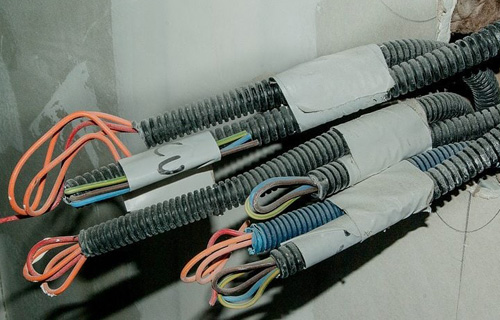Asbestos and Electrical Work in the House

As electricity was becoming more and more of a commodity in the 1900s United States, manufacturers were more and more interested in finding types of materials that would allow for safe processes of making electrical products as well as for their transportation and distribution.
Even in the early stages of commercial electricity, there were manufacturers that incorporated asbestos into items that were destined for electrical panels. The toxic mineral was used with the purpose of fireproofing since asbestos has long been known to have a high resistance to electricity.
While utilized with the intention to protect, workers that swallowed or breathed in asbestos fibers, while unaware of the fact, risked developing cancerous diseases related to asbestos exposure, most common of which are lung cancer, asbestosis and mesothelioma. Fighting asbestos-related diseases can be difficult because the symptoms do no show up until the condition is already aggravated and little can be done.
Most Common Electrical Products
Since the toxicity of asbestos has become public knowledge and the 1970s brought about a ban on most of its uses with few exceptions, the mineral is not actively used in the manufacturing of products today, but the risk of exposure remains in the cases in which old houses are in need of electrical work.
Electricians should be especially cautious when it comes to buildings that were constructed between the 1930s and the 1970s because there is a high chance that wire work has been done with asbestos-containing materials.
A few items associated with electrical work and potentially containing asbestos are:
- electrical breakers
- electrical cloth
- electrical insulation
- electrical panels
- electrical partitions
- spackle
- thermal paper
If such products have been kept in a good condition, the homeowner would not have any reason to worry. However, when they become deteriorated and, thus, they can cause the release of asbestos dust into the home environment then they become a menace.
If you are planning a few upgrades for your home and you suspect your eroded electrical system of being embedded with asbestos, you should have a professional approach the situation since they have the necessary equipment and knowledge to handle hazardous substances. It has been medically proven that asbestos fibers that have been inhaled remain within the organism for the rest of the person's life, constantly irritating internal organs and creating the possibility for tumors to develop. This is not a risk you want to take for your family.
Most Likely to Be Exposed
Asbestos in electrical insulation is such a frequent occurrence that there have been a number of studies trying to determine the levels of exposure that electricians have to face on the job, and while the results differ, the one thing they have in common is that electricians are more at risk of developing an asbestos-related disease than the typical individual.
The people that are most likely to be exposed to asbestos while doing electrical work in houses built prior to the asbestos ban in construction are:
- construction workers
- DIY practitioners
- electricians
In theory, the workers should always be warned beforehand if they are about to encounter asbestos, however that is not always that case. It is of utmost importance for personnel to take all necessary precautions in advance so that they are able to minimize any kind of exposure.
Avoiding Asbestos Exposure
While hiring a professional to help you would be the safest way to go, if you decide to work on your electrical system on your own, then there are a few things you should keep in mind:
- you should gather information about asbestos: primarily on uses, legislation and health risks.
- map out possible asbestos focal points in your house: a proper inspection should be done before any remodeling is in progress.
- acquire proper safety equipment: check the OSHA guidelines for work with asbestos.
- seal the work site: be careful to not spread the toxic fibers around the area.
